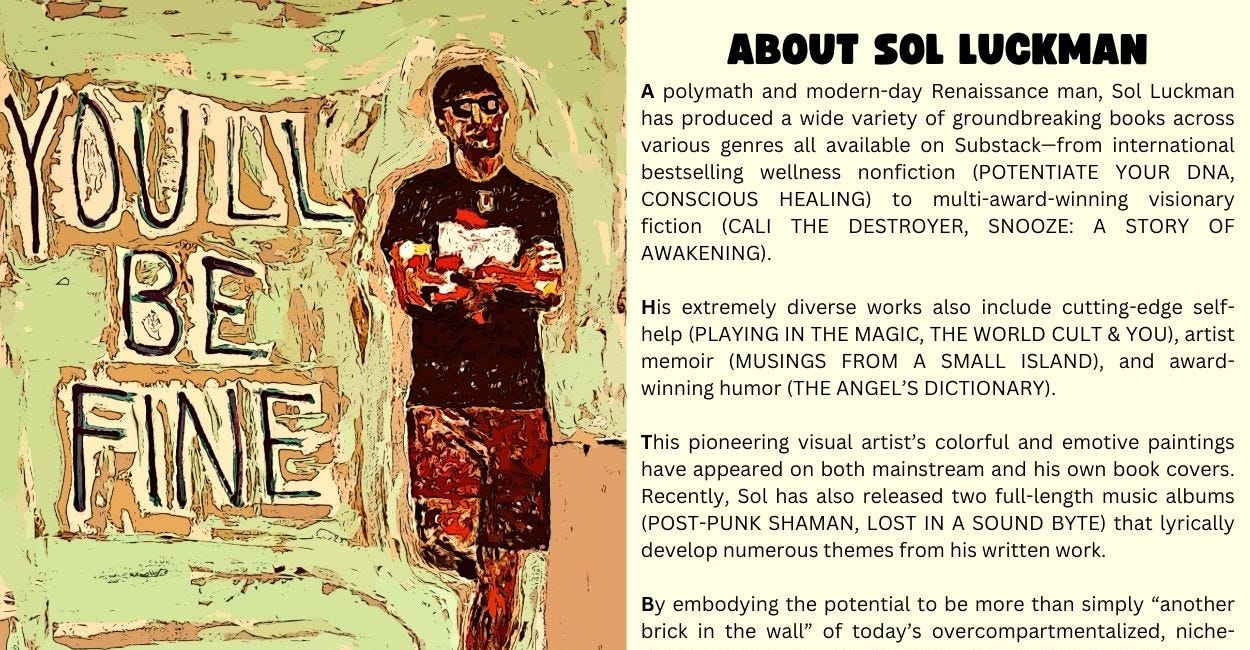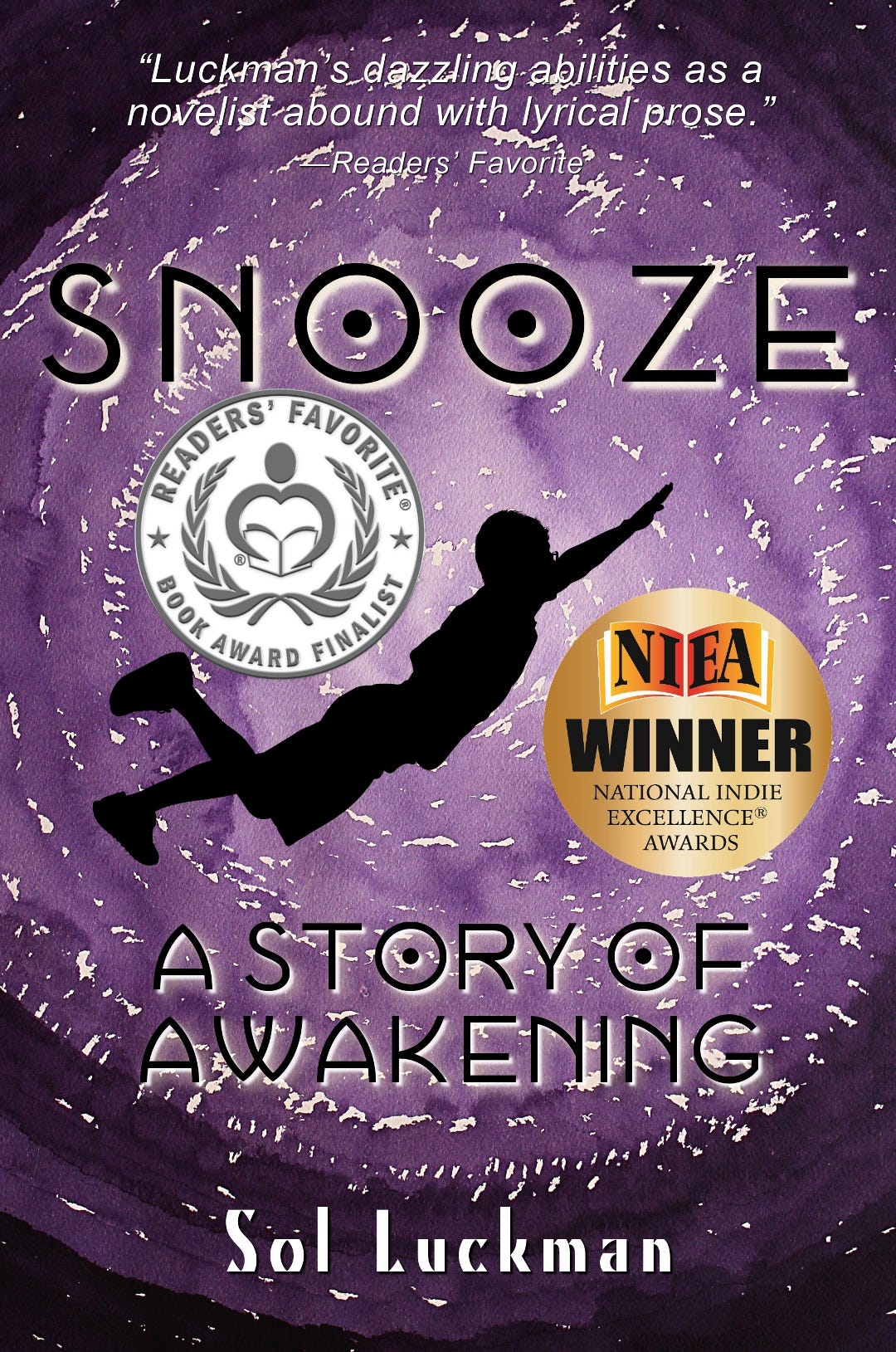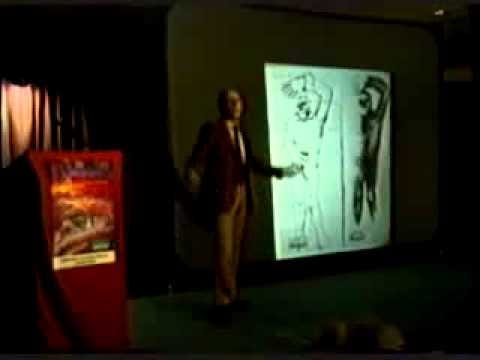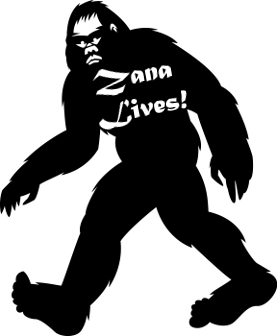📖 Check Out the Award-winning SNOOZE on Substack: Exploring Human Potential through Lucid Dreams, Paranormal Abilities, Parallel Universes & … Bigfoot
Could It Be There’s No Such Thing as the Paranormal … Only Infinite Varieties of Normal?
👁 Once you’ve started your trial or paid subscription, just SCROLL DOWN TO THE SECTION “👀 HOW DOES THIS WORK?” TO ACCESS THE LINK TO THE BEAUTIFULLY FORMATTED EDITION OF THE FULL EBOOK.
“Highly original fiction with more than a dash of the otherworld; well-developed characters, both male and female; excellent adventures; heartwarming conclusion and lots of wonderful ideas—what is there not to like? Highly recommended, a must-read.”—INDIE SHAMAN Magazine
Sol Luckman
Dreams of Flying
My earliest dreams were lucid ones of flying. I have a particularly striking memory of soaring high above my father’s tobacco fields where I used to spend hours at a time searching for arrowheads as a boy.
There was a method to dream flight—not unlike the way a condor rides thermal currents to gracefully corkscrew up or down. The feeling was one of bliss almost beyond description … like walking into the light upon death, or emerging into it at birth.
I can still visualize the terra cotta of the clay fields falling away beneath me as I ascended—until they resembled not so much the Cherokee relic hunting grounds of my leisure, but rather irregular red pepper flakes sprinkled at random on a verdant tablecloth.
Given my background, it’s not entirely surprising I should return to the theme of lucid dreams of flying in a novel, SNOOZE: A STORY OF AWAKENING. After all, such dreams continued well beyond my childhood and happen even today.
Not infrequently, my lovely partner, Leigh, ever patient with my foibles, is jolted awake in the dead of night by my odd habit of putting an arm above my head in sleep—as if I’m slicing through the air. Fortunately, over time she has perfected the ability to ignore this eccentricity.
Fittingly, the idea for SNOOZE occurred to me one morning as I lay in bed trying to shake off a dream of flying.
My then nine-year-old son, deep in the throes of superhero addiction, sat beside me on wake-up-dad duty and innocently remarked that I looked like a superhero myself in my blue, lavender-scented sleeping mask. (Lucid dreamer or no, I’m a terribly light sleeper, and find that darkness does wonders for my pineal’s production of sleep-inducing melatonin.)
“You think so?” I managed to ask, yawning while removing my mask.
“Definitely,” he replied with confidence twinkling in his eyes. “You could call yourself Snooze.”
This ostensibly casual exchange mysteriously opened the floodgates of my creative consciousness—and soon I had written the first chapter of the novel that would eventually be called SNOOZE.
Real Magic for Changing the Real World
I had in mind to create something indeed like a superhero story—a believable one, a far cry from the stretched affairs currently gracing so many silver screens.
I also had a notion to write a book about how real magic, as opposed to a mishmash of hocus pocus featuring wizards and wands, might function in—and ultimately change—the real world.
The skinny story is that SNOOZE is a sci-fi/fantasy novel about a psychically gifted boy named Max Diver who uses his burgeoning paranormal abilities to fly to the dream world in search of his astronaut father who is marooned there. A full exploration of SNOOZE would have to go into much deeper territory, including:
• The book’s positioning of patriarchy, symbolized by Max’s father, as that which appears strong but is, in fact, weak and in need of rescue;
• The ways in which SNOOZE can be read as a profoundly “Gnostic” text promoting deep ecology and a wholesale reinvention of the way humans conceptualize and relate to nature;
• The novel’s in-depth treatment of Dewey Larson’s pioneering physics known as the Reciprocal System of physical theory, shortened to Reciprocal Theory, which provides a theoretical framework for the interfacing realities of consciousness and unconsciousness, or waking and dreams;
• The necessity of activating the energy of the heart, as confirmed scientifically through the research of Glen Rein and the Institute of HeartMath, in order to access the miraculous totality of human potential; and
• The possibility, explicitly explored, that as enough people awaken in this manner, a social tipping point will be reached sufficient to reinvent our reality and create a freer, more harmonious and more prosperous world.
By “real magic,” I mean just that. Specifically, I’m referring to the longstanding tradition of seemingly miraculous abilities called siddhis in Vedic literature—which are understood not as superhuman capacities so much as belonging to, if submerged in, human nature.
Scientifically Theorizing Paranormal Abilities
Siddhis are said to come in a number of shapes and sizes. Common ones, witnessed by thousands of people over the ages, include telekinesis (moving objects with the mind), telepathy (ESP), and levitation or flying.
Historically documented in numerous individuals, from Indian gurus to the famous Catholic priest, Padre Pio, who was witnessed bilocating, such powers are said to emerge naturally from within the human being, often in connection with pineal gland activation and lucid dreaming.
To co-opt the title of an excellent scientific study of these types of weird phenomena by Dean Radin, the supernatural is perhaps best conceptualized as SUPERNORMAL. Or as I phrase it in my teaser for SNOOZE, “Could it be there’s no such thing as the paranormal … only infinite varieties of normal we’ve yet to understand?”
The idea of siddhis had fascinated me ever since I initially learned of them as an undergraduate. It was mind-blowing that one of the most venerated systems of personal development on the planet—the Vedic tradition of India—insisted, in essence, that everyone inherits the capability of becoming a superhero!Begging the question … What would it actually be like to experience the sprouting and flowering of these inborn occult powers in oneself?
This question guided me during the character development of my protagonist, Max, a boy endowed with just such abilities that immediately begin to reveal themselves only to grow more intense as the novel progresses. One reviewer described Max’s merging of dreams with reality as “lucid dreams on steroids.”
As previously suggested, in exploring this esoteric subject matter, rather than just shooting from the hip with wild-eyed speculation, I drew on a wealth of established knowledge—often of a scientific bent.
Obviously, I’m indebted to Carl Jung’s influential theories on the relationship between the unconscious and the subconscious and states of waking consciousness in personal “alchemy.” At its core, SNOOZE is a fictional meditation on the process of human metamorphosis into a more evolved kind of being with the ability to manifest thoughts in real time.
Subtitled “A Doctor’s Revolutionary Research into the Biology of Near-death & Mystical Experiences,” Rick Strassman’s seminal DMT: THE SPIRIT MOLECULE served as a starting place for theorizing the transformational role played by the pineal gland in the development of heightened human potential.
As noted, Dewey Larson’s Reciprocal Theory, elaborated in such classics as THE UNIVERSE OF MOTION and BEYOND SPACE & TIME, became the touchstone for SNOOZE’s physics of parallel universes.
The notion of mirroring realities in a unified field, further developed and applied by David Wilcock in THE SOURCE FIELD INVESTIGATIONS and by yours truly in POTENTIATE YOUR DNA, was already near and dear to my heart.
In SNOOZE I had the tremendously satisfying opportunity to “try on” how the mystical realm of time-space might be literally experienced from the perspective of the everyday world of space-time … for someone capable of undertaking, and surviving, the round-trip.
Coming to Terms with Bigfoot
Finally, we come to SNOOZE’s treatment of Bigfoot, or Sasquatch. From the time I saw CREATURE FROM BLACK LAKE and THE LEGEND OF BOGGY CREEK as a kid, I was simultaneously terrified and hooked by the thought that a gigantic, hairy apeman might somehow inhabit the fringes of consensus reality.
As an adolescent circa 1980, long before the current FINDING BIGFOOT craze, I went so far as to go on “squatching” expeditions in search of the creature in the woods of Appalachia—to the general amusement, and gentle derision, of my family and friends.
I never encountered Bigfoot, never saw so much as a smudgy footprint of questionable provenance, but to paraphrase Journey’s Steve Perry, I never stopped believing.
Lloyd Pye, author of INTERVENTION THEORY ESSENTIALS and a major inspiration behind the theory of cryptids, or mysterious creatures, outlined in SNOOZE, never stopped believing either.
Pye’s research in genetics, Sasquatch and human origins directly challenges mainstream scientific orthodoxy and dogma. In fact, strange as it may sound, Pye makes it abundantly clear that if humans are to understand where we come from and where we’re headed, we first need to grasp our relationship to Bigfoot.
My intent in writing SNOOZE wasn’t to provide a definitive answer to this riddle, but merely to propose a possibility. Specifically, I suggest that Sasquatch might not be a wild animal to be feared and hunted, but rather another variety of person from whom we might have much to learn.
As for the hotly debated existence of Bigfoot, pointing out that slow-moving, dimwitted, diurnal pandas were once thought by “scientific” Westerners to be merely creatures of legend, Pye logically asked why couldn’t fast, intelligent, nocturnal Sasquatches exist?
“Some explained their elusiveness by pointing out that less than forty percent of the earth’s surface was fit for human habitation,” we read in SNOOZE. “That left fully sixty percent of the planet—much of which was poorly surveyed even if it had managed to be explored—as a potential habitat far from human eyes for any number of cryptids, including Sasquatch.
“As for why no fossilized Bigfoot bones supposedly had ever been found, Max’s mother pointed out that practically no fossilized monkey bones had ever been discovered either, for the simple reason that fossils didn’t form in the heavily forested areas inhabited by monkeys. If Bigfoots lived in similar places, as often reported, it only made sense that they wouldn’t leave fossils either.”
Call it poetic timing or subliminal programming—but I finished the first half of SNOOZE while sojourning in Humboldt County, California, close to Bluff Creek, where the famous Patterson-Gimlin film purporting to capture a female Sasquatch strolling through the woods was shot.
In my treatment of the Bigfoot phenomenon, be it reality or legend, “Patty” became fictionalized as “Zana,” a nod to the renowned Russian hominoid. Pye wrote in great and convincing detail about Zana, an apewoman who for decades was a member of a remote village, where, according to dozens of eyewitnesses, she worked as a laborer and bore simian-looking progeny to human fathers.
In closing, I wish to assure Pye—who recently passed away from space-time and is perhaps alive and kicking in time-space even as I write—that, at least in the pages of SNOOZE, Zana lives!
Copyright © Sol Luckman. All Rights Reserved.
⏳ WHY WAIT? START YOUR TRIAL & GET YOUR SQUATCH ON TODAY! ⏳
Keep reading with a 7-day free trial
Subscribe to Sol Luckman Uncensored Updates & Uploads to keep reading this post and get 7 days of free access to the full post archives.















